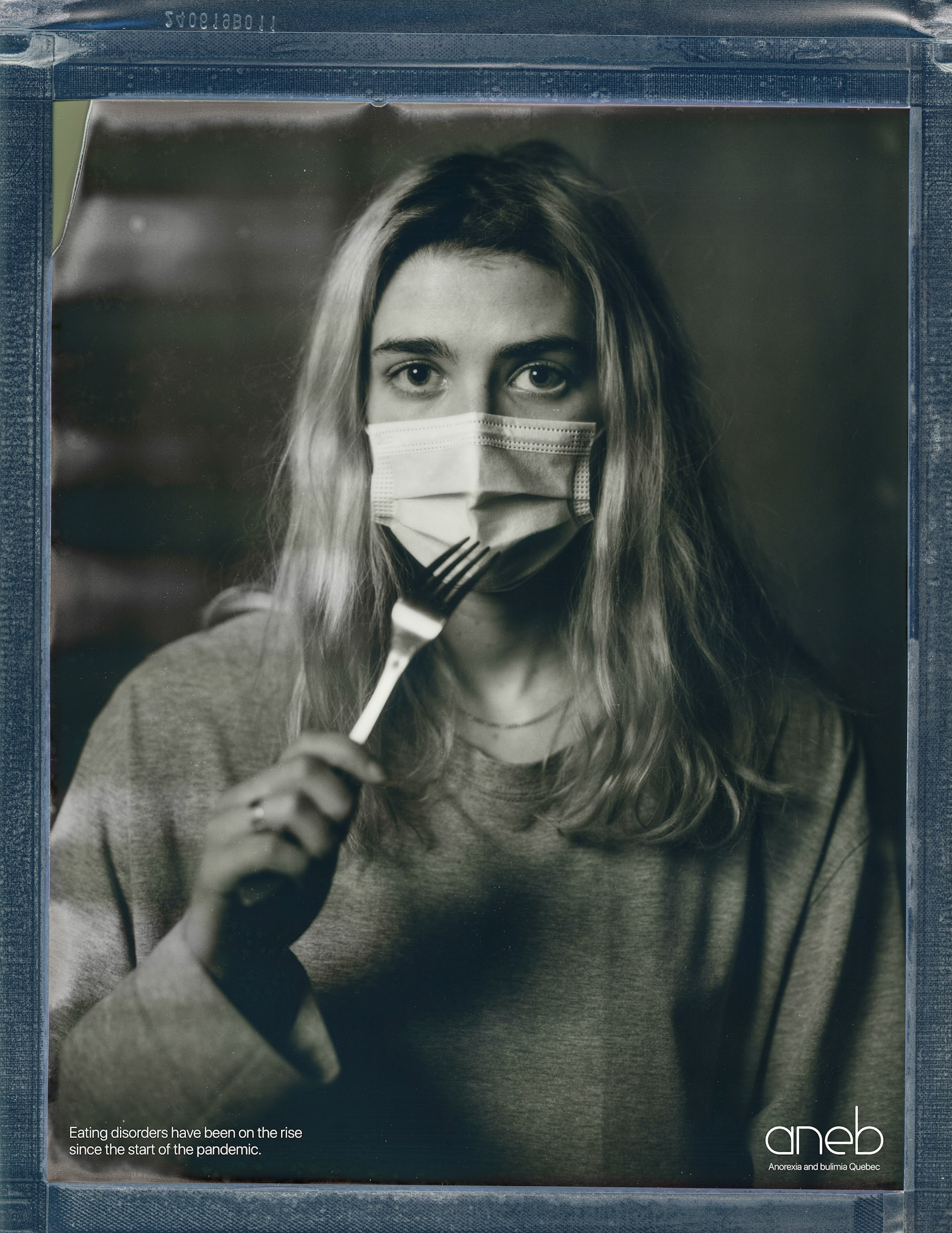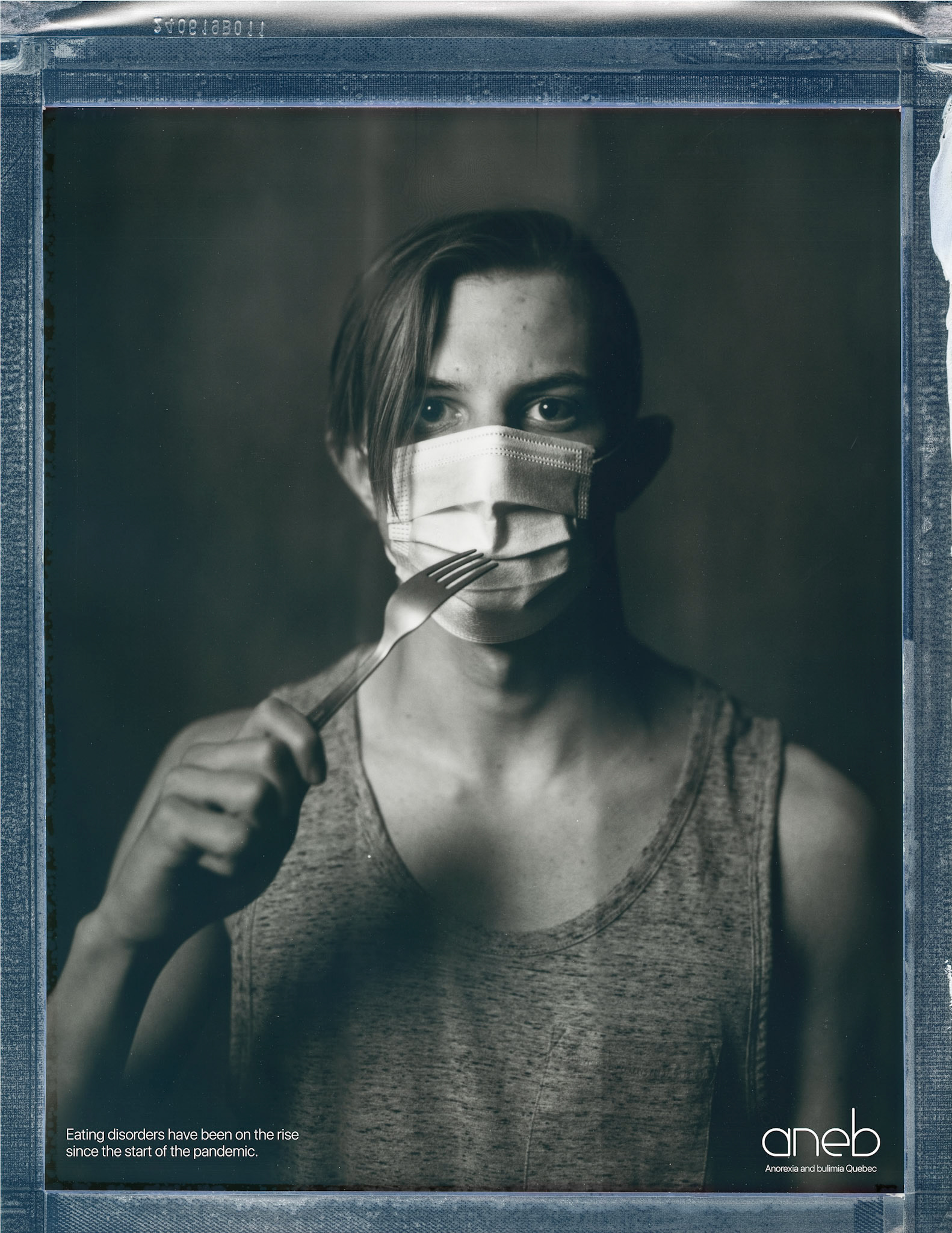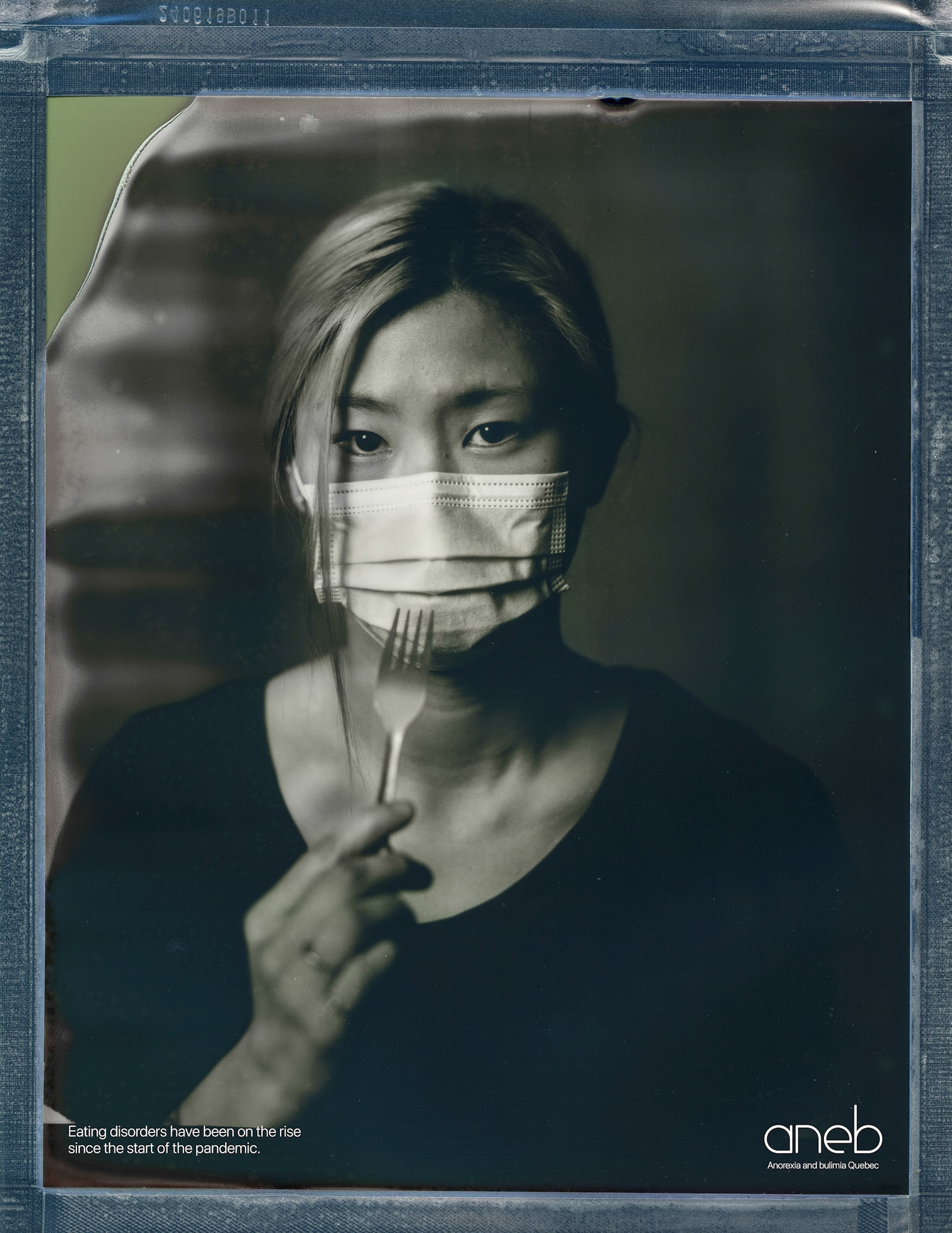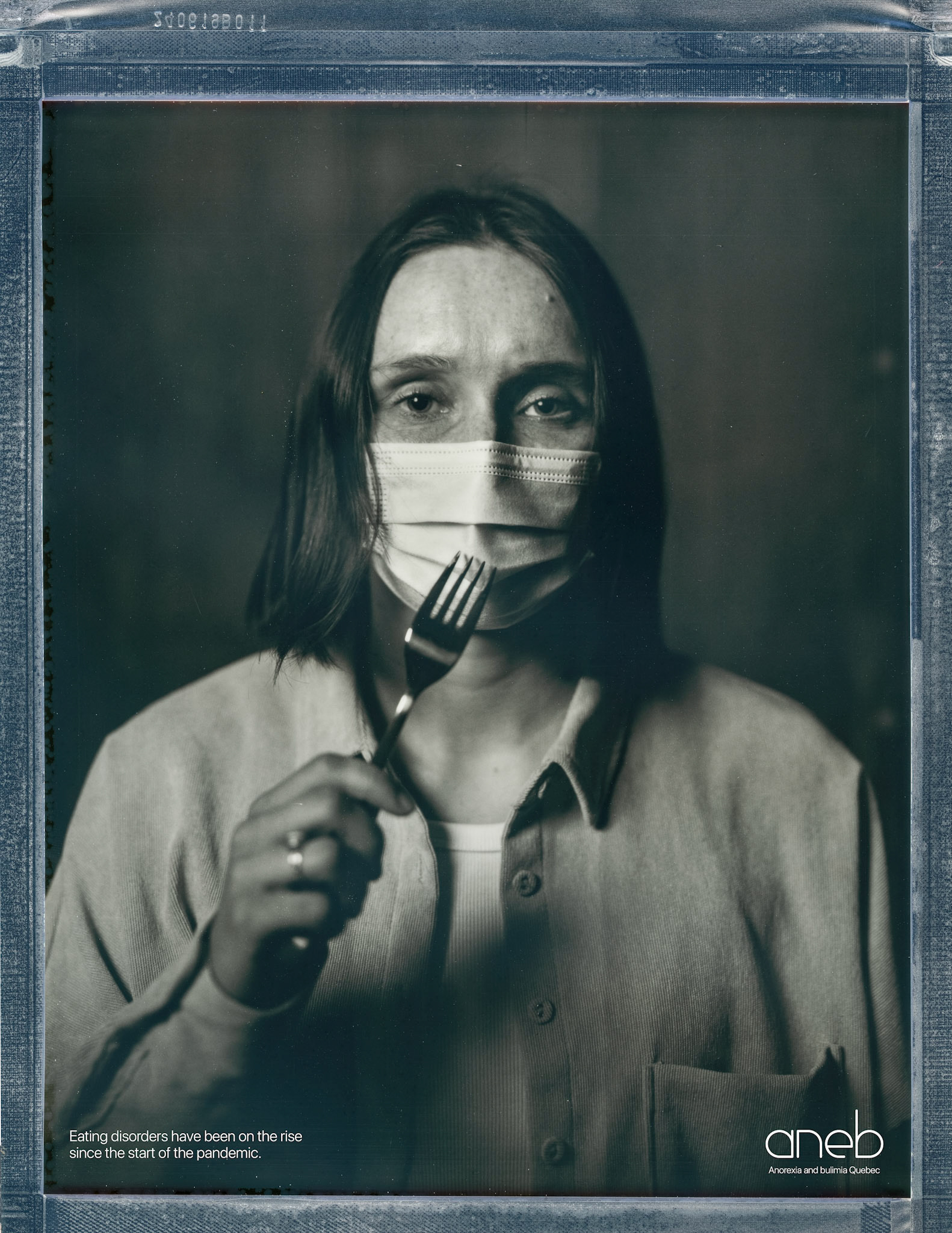



ANEB is a non-profit organization offering help to people suffering from eating disorders.
For this project, I was keen to be as genuine and true as one can be. No retouching, no massive shooting, no glam studio artefacts: one photographer in sync with one human being struggling with a nutrition disorder during the pandemic.
Instant polaroid seemed obvious to me but on very large format (08x10) to capture an image that would need barely any enlargement.
I would also use a 08x10 field camera to distance myself as much as possible from technology.
The use of Polaroids would limit me to 7 shots per character, consequence of the extremely limited world stock; an unstable support that would give me no certainty, placing me in the same fragile space as my characters.
These “clichés” would bear the real scars of a simple chemical reaction, such as the affliction that afflicts these young people.
